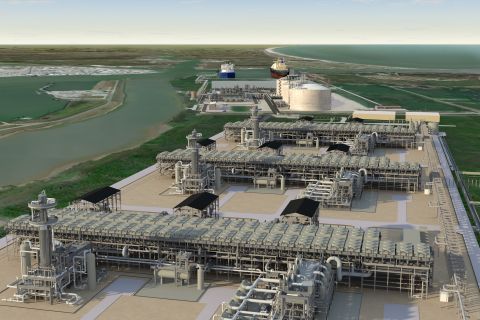Saudi Aramco remains committed to producing enough oil in a manner that will extend the life of its fields as long as possible, president and chief executive Abdallah S. Jum'ah told industry members at a London forum on the eve of the most recent OPEC meeting. "Our experts aren't looking at what we'll pump in the next decade, but rather at our production strategies for the year 2054," he said. Jum'ah also addressed the recent spate of criticism that the kingdom's oil production is about to plateau. At least in some fields, watering out has begun, according to some reports. "We stand upon a firm foundation of 260 billion barrels of crude," Jum'ah said. "Those reserves are spread across 85 fields and 320 different reservoirs, and represent a conservative accounting of our total reserve base, given our cautious assumptions about ultimate recovery rates." The kingdom owns roughly a quarter of the world's total reserves and leads in crude production and exports. It is one of the top two suppliers of crude to the U.S. and No. 1 to Japan, the world's two largest economies, and is a major supplier to the European market and other Asian economies. Jum'ah said Saudi Aramco, unlike publicly traded national oil companies, can make decisions for the longer term. "We're meeting the world's energy needs now, but... what happens as demand increases in developing economies such as India and China, even while the industrialized economies of Europe, North America and Asia continue to rely heavily on imported energy?" Saudi Arabia is identifying new reserves through additional discoveries, enhanced recovery techniques, and more accurate characterization of its reservoirs. "For many years we have been able to make healthy additions to our reserves, or at the very least to replace our production, meaning that despite our prolific output, we have not had to draw down our total reserves," Jum'ah said. Saudi Aramco accounts for about 11% of daily global crude production. "Depending on market demand, we can now produce 10 million barrels of oil daily, and easily sustain that level for the next five decades. Our ability to achieve that level has been tested repeatedly during the last several years, and without exception we have been able to bring the necessary additional barrels onstream," he said. Saudi Aramco's 10-million-barrel-per-day capacity currently includes a surplus capacity of some 2 million barrels, with a range of long-term crude development scenarios that would raise capacity to 12- or even 15 million barrels a day, he said. More than half of the kingdom's potential hydrocarbon-bearing areas are still relatively unexplored. "Based on available data, in the next 25 years we expect to find more than 100 billion barrels of recoverable reserves in those areas, plus additional recoveries coming from our known fields. That puts future reserves in the neighborhood of 360 billion barrels, which at current production levels translates into close to 120 years' worth of oil." Jum'ah said Saudi Aramco's strategy on reservoir management is to maximize the ultimate recovery of hydrocarbons from the fields, and that requires a long-term view. "As a result, gradual depletion makes good business sense for us, and for our customers."
Recommended Reading
Shipping Traffic Freezes Up in Port Waters After Baltimore Bridge Collapse
2024-03-26 - U.S. port of Baltimore traffic was suspended until further notice following a bridge collapse. At least 13 vessels expected to load coal were anchored near the port at the time of the incident.
US Gulf Coast Heavy Crude Oil Prices Firm as Supplies Tighten
2024-04-10 - Pushing up heavy crude prices are falling oil exports from Mexico, the potential for resumption of sanctions on Venezuelan crude, the imminent startup of a Canadian pipeline and continued output cuts by OPEC+.
Segrist: The LNG Pause and a Big, Dumb Question
2024-04-25 - In trying to understand the White House’s decision to pause LNG export permits and wondering if it’s just a red herring, one big, dumb question must be asked.
Oil Dips as Demand Outlook Remains Uncertain
2024-02-20 - Oil prices fell on Feb. 20 with an uncertain outlook for global demand knocking value off crude futures contracts.
US Leads Global Oil Production for Sixth Straight Year-EIA
2024-03-11 - The Energy Information Administration says it is unlikely that the record will be broken by another country in the near term.

